Хаас за Великобритания
Ромен Грожан:
Silverstone is one of the fastest tracks in Formula One, but it’s not necessarily from long straights but rather from long, flowing corners. Can you describe the feeling of speed you experience at this power circuit?
It’s a really cool track, especially the fast part through Maggotts, Becketts and Chapel corners. When you have the grip in the car there, you really get the sensation of the g-forces. Everything’s pushing down. You really want to get the first part of the flowing corners right. If you don’t, you just lose a lot of time. When the car is very stable and has good balance, you can go flat-out and really push it to the limit.
With speed playing such a role at Silverstone, how difficult is it to overtake? And if the opportunity presents itself, where can you overtake?
There are a few spots. On the straights and through the high-speed corners, you have an opportunity if your car is much better balanced than the car in front of you. After turn three or turn four, there’s the long section after the slow-speed corners, and that’s a good opportunity, as well. But the thing about Silverstone is really the difference between a well-balanced car and an unbalanced car –that’s where the opportunity lies.
What do you need at Silverstone to have the proper balance in your racecar?
Silverstone is not an easy track. You’ve got all the high-speed sections, where you really want to carry some speed and get fast. Then you’ve got the twisty turns three and four, then the whole last corner, which is tricky on the throttle application. Generally, you need a good rear-end, and if you get that, you can then put some front-flap on and go faster.
Is Silverstone the track where you’re able to run at full throttle for the longest periods of time?
I think probably Baku is where we’re flat-out for longer periods of time, but Silverstone is a power track, as well. You need good power to get a good lap time there. There are a few straight lines and a few overtaking opportunities but, mainly, Silverstone is about the grip of the car through the high-speed corners.
How do you find that edge to determine when you can be flat-out and when you can’t?
Well, you find out quickly when you’re wrong, but you have to try. It’s as simple as that. You go step-by-step, but definitely the last step is going flat-out.
At most circuits, pole position is critical. But for some reason, not as much at Silverstone, where the pole winner has only gone on to win six times in the last 20 years. Is this happenstance or is there something about the track’s layout that provides more opportunity for those a little deeper on the starting grid?
Silverstone is in the UK, and the UK weather is known to be sometimes rainy, sometimes dry. That plays a part. It can change a lot between qualifying and the race, and then even in the race itself. You can also have a good car in qualifying, but if it’s not quite perfectly balanced for the race, you’ll pay the price. That’s where success lies, and probably why most of the winners didn’t start from pole position.
Do you have any milestones or moments from your junior career that you enjoyed at Silverstone?
I’ve had some good races there. I remember GP2 in 2009 – I scored the pole position by a big margin, and that was pretty good fun. In F1, back in 2012, I had a first-lap incident where I had to change the front wing and from there I just pushed all the way. I remember overtaking (Jenson) Button and (Lewis) Hamilton through Maggots, Becketts – the high-speed corners. I came back to sixth from being last on the first lap, which was pretty good.
What is your favorite part of Silverstone?
The high-speed corners at Maggotts, Becketts and Chapel.
Explain a lap around Silverstone, especially now after having competed there with the faster, current-generation car.
Silverstone is a very high-speed circuit. The new cars make it very different, especially through all the high-speed corners – it’s very sexy. Turn nine, the old turn one, is flat out. It’s pretty amazing when you think about it. That’s really the biggest difference, although sector one hasn’t changed that much, but going into turn nine, and then 10, 11 and 12, and Stowe corner is very fast.
Кевин Магнусен: Silverstone is one of the fastest tracks in Formula One, but it’s not necessarily from long straights but rather from long, flowing corners. Can you describe the feeling of speed you experience at this power circuit?
Silverstone is definitely one of the good circuits. It’s really fast and you’ve got some big sections with fast changes of directions. I really enjoy driving the circuit.
Knowing how fast these current-generation cars are, how does the car feel at Silverstone, particularly through the Maggots, Becketts and Chapel corners – an area of the track where you really feel the g-forces being exerted on your body?
Silverstone is probably one of the best circuits for these new cars. It’s a real downforce circuit with lots of high-speed corners. We all know that high-speed corners are the most impressive in a Formula One car, and Silverstone is all about that.
With speed playing such a role at Silverstone, how difficult is it to overtake? And if the opportunity presents itself, where can you overtake?
I haven’t seen how the DRS zones are this year, whether they’ve changed them or not. If they haven’t changed them, then Silverstone is actually a challenging circuit to overtake . It’s all so high speed, so it is quite difficult to follow other cars. You do have some good straights, so if you’re a good chunk faster, then you will be able to overtake, but it’s not going to be easy.
Your teammate mentioned that the difference at Silverstone comes down to the opportunity between having a well-balanced car and an unbalanced car. What do you need at Silverstone to have the proper balance in your racecar?
You need good high-speed balance as most of the corners are high speed.
At most circuits, pole position is critical. But for some reason, not as much at Silverstone, where the pole winner has only gone on to win six times in the last 20 years. Is this happenstance or is there something about the track’s layout that provides more opportunity for those a little deeper on the starting grid?
I think it’s just by chance.
Do you have any milestones or moments from your junior career that you enjoyed at Silverstone?
I won at Silverstone in F3 and World Series by Renault – all the categories I raced there. I can’t really say which one was the best one, but I remember they were all good.
What is your favorite part of Silverstone?
Maggots and Becketts because they’re the high-speed turns.
Explain a lap around Silverstone, especially now after having competed there with the faster, current-generation car.
Silverstone is mega-fast, a flowing and exciting circuit.
Гюнтер Щайнер: Haas F1 Team has enjoyed its best results this year at power circuits – fourth last Sunday in Austria, fifth in Bahrain and a pair of sixth-place results in Spain and France. Do those performances heighten your expectations for how the team will perform at Silverstone?
Our car seems to be best at high-speed circuits, and with Silverstone being one of them, for sure we’re hoping to have a good result there, as well.
What is it that makes the Haas VF-18 so good at power circuits compared to shorter, more compact tracks?
I think it’s just the aero characteristics. Some cars like slow circuits, some like fast corners, and ours seems to like the fast corners a lot better than the slow ones.
Silverstone is a fast track where drivers are able to run full throttle for long periods of time. How do you help them find that edge to determine when they can be flat out and when they can’t?
They find that edge themselves. If the engineering team gives them a good, stable car, they are not afraid to go flat-out. But they need to be confident that the car will do what they want the car to do, and that is down to the engineering team.
Weather tends to be a large variable at Silverstone, with hot weather interspersed with cool, blustery and even raw conditions. How do you prepare for temperature swings and weather changes, be it at Silverstone or anywhere else?
Other than having data together for the tires and how they work in the different temperatures, it’s honestly hard to prepare. The best we can do is keep our eye on it and go with what the weather gives us.
With Haas F1 Team’s European base being in Banbury, England – about 30 minutes away from Silverstone – how helpful is this location for personnel and for logistics as we near the end of this unprecedented stretch of three straight races?
Most of the guys are based near the circuit or their home is near Banbury, so it’s actually quite nice for them as most can go sleep in their own bed. Nevertheless, they need to get up early to get into Silverstone and they come back late. With three events in a row, it’s quite good that it’s the last one, for at least they’re near to home.


















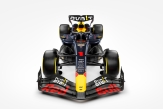
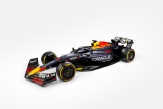

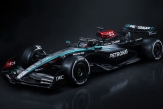
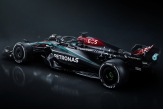


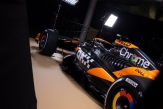

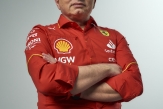
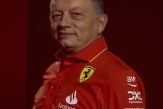
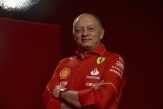

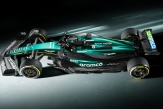




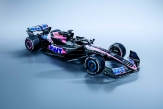
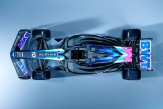






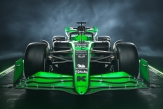

15/04/2024 от Огнян Тенчев (drJeckyll), няма коментари